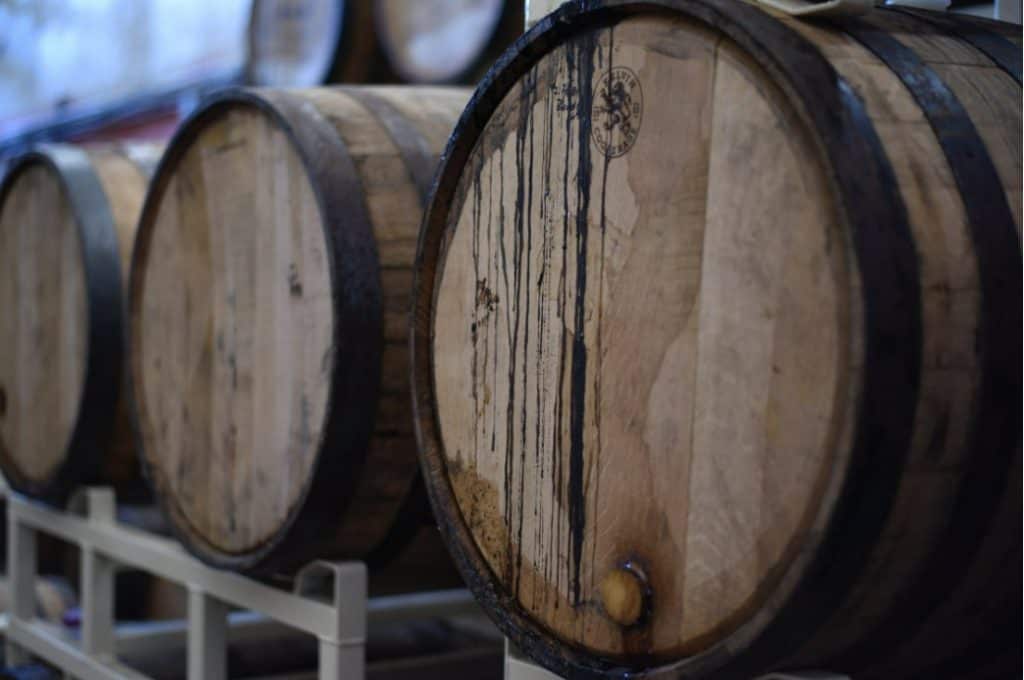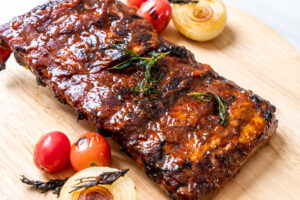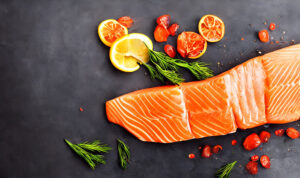
Order your next bottle of Scout & Cellar wine TODAY!
Have you ever wondered how wine is made? Don’t worry if you’re from the old school; we’ve got you covered.
It’s safe to guess that you appreciate the occasional glass of wine based on your interest in this site. Most people know the difference between Merlot and Pinot Noir. However, many people are unaware of the origins of our favorite bottle.
You might imagine an excited Italian rolling up his pants and feeling grapes between his toes when it comes to wine production. But believe me when I say there is much more to it.
We’ll show you how the humble grape became one of the world’s most famous beverages in this blog.
WHAT WAS THE PROCESS OF MAKING WINE IN THE PAST?
The history of winemaking is extensive and fascinating. Our forefathers may have been drinking wine before they domesticated horses. This is evidenced by the earliest evidence dating back to 6000 BC.
Early winemakers are thought to have fermented alcoholic beverages by mixing grapes with rice.
Grapes were pressed and juiced by human feet for thousands of years. This was until the Ancient Romans constructed industrial wooden presses.
While the core procedures have remained the same, winemaking has been revolutionized thanks to the wonders of technology. You’ll be relieved to learn that modern winemaking is virtually entirely toe-free.
HARVESTING WINE GRAPES
The vineyards play an important role in the final product wines for each vintage. Vineyards are like wine’s wombs. This is where early grape life begins and thrives, because all wine is genuinely born on the vine. The location of the vineyard, climate, geography, soils, vines and rootstocks, irrigation systems, and pest management controls all have an impact on the ultimate product in some way. The grape’s development and specific sugar levels are influenced by both sun exposure and time on the vine.
The annual grape harvest, which can be done using either mechanical harvesting equipment or by hand, is the first step in winemaking. Hand-harvesting allows for more exact selection and often protects the juice content of the grape from oxidation caused by broken skins. Mechanical harvesters are well-suited for big vineyards that are located on a flat stretch of land. They provide a more efficient and frequently cost-effective method. The winemaker’s final wine style goals, as well as budget, determine the kind of harvest. This ca be hand-picking, machine harvesters, or a combination of the two.
DESTEMMING AND CRUSHING
It’s often a crazy hurry to get the grapes crushed and destemmed once they’ve been harvested. The goal of crushing is not to extract all of the juice from the grape. It is to split the exterior skin and enable the juice to begin its flow. This gives the sugar in the juice a chance to interact with the natural yeast on the grape’s skin. The wine’s alcohol is produced by a mix of yeast and sugar. The yeast converts the sugar to alcohol and carbon dioxide.
One of two things are used to crush the grapes:
- Using a strong spiraling steel roller, mechanically.
- The well-known grape “stomp.”
At this point in the process, the grape stems are removed from the juice, or “must,” as it is known. This is also the point at which the routes of red and white wine grapes change. If a wine is going to be a red wine, the grape skins are responsible for the color and tannin contributions. If a white wine is desired, the grape skins and stems are removed at this stage of the process. The grapes are pressed before fermentation.
FERMENTATION OF WINE
This is the stage of winemaking when the wine truly begins its journey to the bottle. The sugars in the grapes are transformed to alcohol and carbon dioxide during fermentation. A significant amount of residual heat must be controlled to avoid flavor distortion. The fermentation of red wine is usually done in stainless steel tanks, big vats, or oak barrels. Maceration is the phase in which the must and grape skins have the most contact. This results in good red wine color, structural tannins, and a wide range of flavor components and subtleties. The more contact the red wine grapes have with their skins, the stronger the wine will be.
White wine fermentation is frequently done in stainless steel tanks with lower heat levels that are carefully monitored and oxygen levels that are properly controlled (to prevent rapid oxidation). One exception is Chardonnay, where some winemakers choose to ferment the juice in sealed oak barrels to affect flavor development.
If the grapes aren’t quite ripe enough during the fermentation process, sugar can be added to the must to boost the alcohol content of the final product. This technique is known as “enrichment.” Similarly, if the acidity of the must is low, acid can be added; this is referred to as “acidification.” A stage known as “stirring the lees” is also added to the white wine fermentation process. This phase entails combining the leftover yeast from the fermentation process to produce extra tastes.
PRESSING
Pressing, which is typically done right after the crush for white grapes and after red wine fermentation, entails squeezing the sticky grape solids left over from either the crush or fermentation to obtain a very thick liquid that can be used to enhance both the color and flavor of the resulting wine.
FERMENTATION WITH MALOLACTIC BACTERIA
Malolactic fermentation is a process in which lactic acid bacteria transform the juice’s harsher malic acids into lactic acid, resulting in a softer mouthfeel and more appealing palate presence. Most red wines undergo malolactic fermentation to lower acidity, and some fuller-bodied white wines undergo malolactic fermentation (typically in the barrel) to soften them up.
THE WINE’S MATURATION
The maturity stage of winemaking is essentially the final leg of a wine’s trip from the vine to the bottle. Traditional oak barrels come to mind when you think of the wine maturation process, and with good reason; both French and American oak are the most popular containers for the maturation process to take place. Oak provides protection, gives flavor, and allows a small quantity of oxygen to pass through the staves, easing the tighter tannins in red wines and adding flavor depth to both red and white wines.
A stainless steel tank is another alternative for maturing. This choice is growing in popularity because they are inert, cost-effective because they do not need to be replaced after so many years in service, and simple to maintain. Some producers enhance the process by adding oak chips to the juice shot for the “oak effect” to compensate for the lack of wood in the stainless steel tanks.
Racking is the technique of transferring juice from one barrel to another, which has two major advantages:
- The juice is separated from the sediment at the bottom, which may have an adverse effect on the final flavor.
- Aeration is used to open up the wine’s tastes and allow it to mature further.
FINING AND FILTRATION ARE TWO STEPS IN THE FINISHING PROCESS
Several key components are involved in the finishing process. First, the wine is finished and filtered (a process known as “clarification”). This removes the great majority of the undesired particles still present in the wine. During the fining phase, egg whites are frequently used to bind up and weigh down microscopic floaters in the wine so that they end up on the bottom of the barrel and may be separated from the wine.
Filtration is the process of eliminating larger solids such as dead yeast cells and other particles from wine so that it is no longer murky and is bright and clear, as a consumer would expect.
WINE BLENDING
Blending wine can be as simple as mixing two different wines together, or it can be more complicated, such as blending numerous varietals from different areas to create a new wine with a distinct flavor profile. It almost goes without saying that blending wines for today’s global market requires a lot of knowledge and a very sophisticated palate. A winemaker may blend wines for a number of reasons, including adjusting pH, acidity, alcohol concentration, tannin content, or improving color, fragrance, or flavor.
WINE BOTTLING
Finally, the winemaking process reaches the bottling stage – the finish line is in sight! Mechanical bottling lines are now used to bottle wines. Smaller wineries may rent bottling rigs that can be moved to the winery for the season, but larger estates may have their own bottle lines. In terms of the procedure, the wine bottle is slowly filled and topped with either nitrogen or carbon dioxide to displace any oxygen that may be present above the fill line.
Depending on the winery’s traditions and philosophies, the bottle is next sealed with a classic cork or a modern screw top. The bottles are labeled with their individual feature labels, and they’re off to either continue maturing in bottles or go straight to the case for distribution.
Summary: How Wine Is Made
Have you ever wondered how wine is made? Don’t worry if you’re from the old school; we’ve got you covered.
It’s safe to guess that you appreciate the occasional glass of wine based on your interest in this site. Most people know the difference between Merlot and Pinot Noir. However, many people are unaware of the origins of our favorite bottle.
You might imagine an excited Italian rolling up his pants and feeling grapes between his toes when it comes to winemaking. But believe me when I say there is much more to it.
We’ll show you how the humble grape became one of the world’s most famous beverages in this blog.
If you have any questions about How Wine Is Made contact me today.







